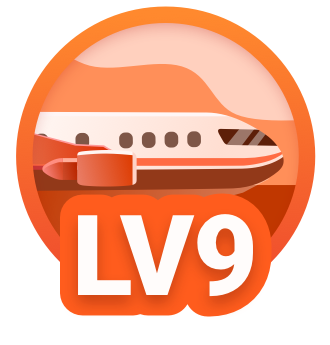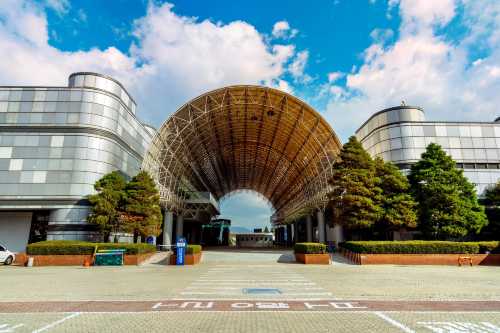Popular Trip Moments
Toyoko Inn: A Handy Option for you | Daejeon Art Cinema: A Great Spot for Shows in Daejeon | Hotel Onoma, Daejeon, Autograph Collection: A Review of Location and Check-in | Indoor Date with Kids: Our Own Kids Cafe | A Surprisingly Unique Art Experience at Daejeon Creative Center | Daecheongho Natural Ecology Center: Indoor Date Spot with Kids | Daejeon Modern History Exhibition Hall | Stendhal Hotel Review: A Comfortable Stay for Couples with Early Check-in Perks | Yuseong Hot Springs Foot Bath Experience | Ramada by Wyndham Daejeon: A Top Choice for Comfort and Convenience | Daejeon: Daecheongho Rose Exhibition and Festival | Church and Dance Hall: The Best Cafe in Daejeon | A cozy café with a lush full-window view, perfect for working. | A must-visit oil pasta restaurant in Daejeon | Cherry Blossoms at Gapcheon and Dakdoritang Delight | Emotional Drive Recommendation on the Outskirts of Daejeon! | Daejeon Cherry Blossom Outing 🩷 | Daejeon Cherry Blossom Spots | Daejeon travel destination with a dreamy photo zone | Healing at the Forest Retreat and a 2-Day Trip to Beopjusa Temple in Songnisan | A Peaceful Getaway: My Visit to Daejeon Meditation Garden | Daejeon Mokcheok Bridge, a luminous bridge and a perfect spot for nighttime strolls. | 💕 Daejeon Yulim Park Date Course Recommendation! The perfect place for a sentimental walk | Instagram-worthy cafe in Daejeon: Want It To Maison Tanbang | Review of Daejeon's representative tourist attraction, Hanbit Tower, for free viewing📸 | Exploring Artworks at the Multi-Cultural Space Plan A | Tuiso Station: A Must-Visit for Busy Travelers | Sungsimdang DCC Branch Food Tour Recommendation! | A cosmic journey between stars and planets: Exploring the solar system 🪐 | A Recommended Invention Rest Area for Finding Peace of Mind
Recommended Attractions at Popular Destinations
Bangkok attraction near me | Manila attraction near me | Tokyo attraction near me | Taipei attraction near me | Hong Kong attraction near me | Seoul attraction near me | Kuala Lumpur attraction near me | Los Angeles attraction near me | Shanghai attraction near me | New York attraction near me | Shenzhen attraction near me | Osaka attraction near me | Singapore attraction near me | London attraction near me | Guangzhou attraction near me | San Francisco attraction near me | Beijing attraction near me | Macau attraction near me | Bali attraction near me | Jakarta attraction near me | Paris attraction near me | Ho Chi Minh City attraction near me | Istanbul attraction near me | Phuket attraction near me | Chicago attraction near me | Seattle attraction near me | Toronto attraction near me | Orlando attraction near me | Cebu attraction near me | Chiang Mai attraction near me
Popular Attractions
Pattaya Floating Market | Yangtze River Cableway | YONA Beach Club Phuket | Asterix Park | Putra Mosque | Cruiser Aurora | Tokyo Disneyland | Shanghai Natural History Museum | Prague Castle | Woodland Park Zoo | Tiananmen Square | Jiuzhaigou National Park | Chenshan Botanical Garden | Haixinsha Island | He hopes Hot Yoga | Mission Creek Regional Park | Parque De La Alegría | Jinli Street | ARTSVIT | Kirche Mariä Himmelfahrt | Saurabh lodhi | Indah Court Likas | Hanuman Mandir | Pandav Kalin Shree Kedarnath Mahadev Temple parali | Docce Terme di Saturnia il Mulino | Konsei Shrine | Wojewódzka Biblioteka Publiczna - Książnica Kopernikańska. Mediateka Raszei | Masjid As-Syafi'yyah | Tiffany's Show Pattaya | Inside Burj Al Arab Tour
Popular Restaurants in Daejeon
Kimyoungwoo Coffee | Ganamji | Myeongrang Sikdang | Enhyae Sikdang | Flying Pan | Wimo | Vesta Buffet | Very Shinjuku | Solbat Mukjip | Jeokdeok Sikdang | Siru Hyanggi Daejeon Sinseong | Sutgorwon Naengmyeon | Ildang Gamjatang | Nu Bo Ol | Santa Claus | Moru Brunch Cafe Dunsan | Dolsotbap | Little Wing | Ddu Babi Ang | Gom Espresso Main | Saeng Eogeoseutin | Sungsimdang Daejeon Station | Yuseong Bokjip | Dasom Chaban | Hwaroya | Hyeseongok | Charcoal Gol Won Cold Buckwheat Noodles | Yussi Ne Bueok | Gatpohosan | Seongsimdang Cake Bu Ddi Kkeu
Popular Ranked Lists
Top 3 Best Things to Do in Xuchang | Popular Luxury Hotels in Kathmandu | Popular Must-Visit Restaurants in Chiang Mai | Top 12 Best Things to Do in Baise | Top 8 Best Things to Do in Qujing | Popular Must-Visit Restaurants in Taipei | Top 9 Best Things to Do in Qingyuan | Top 10 Local Restaurants in Boston | Popular Luxury Hotels in Dhulikhel | Popular Luxury Hotels Near Province of Palermo | Top 18 Best Things to Do in Honghe | Top 3 Luxury Hotels in Dhaka Division | Top 3 Best Things to Do in Dezhou | Popular Luxury Hotels Near Century City | Top 3 Best Things to Do in Cixi | Popular Luxury Hotels in Kieni East | Top 5 Best Things to Do in Songpan | Popular Luxury Hotels Near Tatsugo | Popular Luxury Hotels Near Anand | Popular Luxury Hotels Near Manzanillo | Popular Luxury Hotels in Oslo County | Top 5 Local Restaurants in Ulaanbaatar | Popular Premium Hotels Near Geraldine | Top 9 Local Restaurants in Perth | Popular Best Things to Do in Langfang | Top 10 Best Things to Do in Xuancheng | Popular Must-Visit Restaurants in Kyoto | Top 9 Best Things to Do in Chifeng | Top 7 Best Things to Do in Yulin | Top 3 Best Things to Do in Sanmenxia
Payment Methods
Our Partners
Copyright © 2025 Trip.com Travel Singapore Pte. Ltd. All rights reserved
Site Operator: Trip.com Travel Singapore Pte. Ltd.
Site Operator: Trip.com Travel Singapore Pte. Ltd.



















